Ramrod (1947)
Directed by: André De Toth
Written by: Cecile Kramer, Jack Moffitt, Luke Short
Starring: Don DeFore, Donald Crisp, Joel McCrea, Veronica Lake
USA
AVAILABLE ON BLU-RAY: 5th March, from ARROW ACADEMY
RUNNING TIME: 94 mins
REVIEWED BY: Dr Lenera, Official HCF Critic
A cattle-vs. sheepman feud loses Connie Dickason her fiance Walt Shipley, but gains her his ranch, which she determines to run alone in opposition to Frank Ivey, “boss” of the valley, whom her father Ben wanted her to marry. She hires recovering alcoholic Dave Nash as foreman and a crew of Ivey’s enemies. Ivey fights back with violence and destruction, but Dave is determined to counter him legally, a feeling not shared by his associates – while Connie is not adverse to using her wiles to get men to do her bidding.
I have to say, I thought that a ‘ramrod’ was the thing you ram down the charge of a muzzle-loading firearm, but it’s also an American term for foreman or manager. I don’t think that I’ve encountered the term elsewhere, though I could be wrong. But then again, I hadn’t heard of Ramrod either, even though I like my movies old as well as new, though I was definitely aware of its Hungarian director Andre de Toth [real name Tóth Endre Antal Mihály], mostly for making the first major 3D movie House Of Wax in 1953 despite being blind in one eye and therefore unable to see the format – though come to think of it Day Of The Outlaw, which I reviewed a couple of years ago, was also his, and that was certainly an interesting western too. Ramrod is an action-filled ‘oater’ that contains many of the tried and tested ingredients but which manages to wring some changes on them and adds a strong dose of film noir, making for a slightly darker piece than was normal in the genre at the time. It’s also a bit more brutal, de Toth sometimes going slightly further than the Production Code usually allowed, even if by today’s standards the handling seem quite subtle – though many modern viewers may be pleasantly surprised by the way many of the characters are depicted in shades of gray instead of in black and white., and also by the strong lead female character. There were times in the first third or so where I wasn’t sure that Ramrod was going to develop into very much, but even at the beginning it’s full of unusual touches and really does get better and better as the conflict depicted in it escalates, while it contains probably the best non-comedy performance from Veronica Lake that I’ve seen- well, unless you think what someone like Barbara Stanwyck would have done with the part!
This was the first film from the independent production company Enterprise and was Lake’s first movie as a star outside Paramount. She’d worked with Joel McCrea before in Sullivan’s Travels, but he’d found her difficult and even turned down the lead role in I Married A Witch to avoid working with her. By the time of Ramrod she was married to de Toth, who wasn’t the first choice for the film. Initially it was offered to John Ford, but he recommended de Toth, who, as he often did, proceeded to change much of the script, which was based on a novel by prolific western author Luke Short. Shooting took place in Zion and Grafton in Utah. Two days after the premiere, where a a Union Pacific locomotive called the ‘Ramrod Special’ took one hundred Hollywood celebrities to the showing in Salt Lake City, The Hedda Hopper Show – This Is Hollywood broadcast a 30 minute radio adaptation of the movie with McCrea and Lake reprising their roles. The film made a reasonable amount of money and was well reviewed, but Enterprise Productions folded soon after having only made nine pictures.
The screenplay doesn’t really bother setting the scene, instead choosing to throw us into a story which is already part of the way through, along with a lot of hinting at character relations which aren’t always spelt out and which in some cases never will be. This is an unusual choice, though it’s a little hard to pick up on who everyone is and exactly what’s going on. I actually expected the film to then flashback to show us how it all started and to clarify some things but no, it refuses to spoon feed the viewer in this way and I eventually came to the conclusion that this was the right decision though I have to say that I didn’t initially feel that way. We immediately have our hero, shown striking a match off a post box to show how cool he is, and our chief villain who won’t let anybody settle in the valley which he believes he owns, though what is instantly interesting is that Dave Nash is really just here to help Connie Dickason, the conflict really being between a man and a woman rather than between two men – and it soon becomes apparent that the woman is prepared to play almost as dirty as the man. She’s clearly what one would call in simplistic terms a “nice girl”, but circumstances push down the wrong road, after which she literally gallops down it to become a fully fledged femme fatale, albeit one whose side you’ll still on. Abandoned by her fiancee, Connie is determined to stand her ground and not let Frank, who wants her for himself, push her out. Connie clearly has a thing for Dave, but we’re never sure now much he actually likes her. He could just be doing what he’s doing for the money, or feeling that it’s his duty. It’s perhaps a shame that the script felt the need to give him another, much more simply written, female admirer, a very conventional “good girl” called Rose. This was common in westerns but the character here isn’t really necessary.
Dave prefers to rely on the law, a viewpoint shared by the local sheriff Jim Crew, though even quite early on one is asked to think whether this is always the best idea. And this opinion is not shared by others, in particular Connie and gunman Bill who is not always one to wait and see if the other guy shoots first. Brilliantly played by light comedian Dom DeFore with one of the most rascally smiles you’ll ever see, Bill is the archetypal hot-head you can’t help but love, and fortunately the film gives him almost as much screen time as Connie and Dave, though this also means that he sometimes steals it from them. Connie sort of seduces Bill though he’s clearly totally aware of the fact, in quite a sexy little moment as she slowly unbuttons his coat below the frame [and he’s not the only guy she uses in this manner], and gets him to do something which will escalate the war and also frame Frank, though not everything goes according to plan. Shootings, beatings, stalkings, double crosses, a fire, a cattle stampede – the second and third parts of Ramrod rarely have a dull moment, and Russell Harlan’s cinematography, which is already notable for having far more dolly shots than usual for a film from 1947, then comes into its own even more with a fantastic nocturnal pursuit and shootout which utilises some of the great film noir devices such as shadows falling across character’s faces. Though my favourite shot might be when the camera stays totally still for a couple of minutes as it looks out of a cave and observes two characters in the entrance, one of them sat down, the other silhouetted as he scurries about doing this and that.
There’s surprising realism in terms of the violence. I was quite surprised, considering the film’s vintage, to see one guy being punched in the face repeatedly [and made blind as a result], another guy having a cigarette stubbed on his hand, and even someone being shot in the same camera shot as the man doing the shooting, tumbling down the left hand side of a hill as he’s shot three times by the guy on the right. Usually this sort of thing wasn’t allowed. We didn’t even tend to see blood on shirts and faces after a saloon punch-up. On the other hand a few other major moments are rushed, especially the cattle stampede which could have been a real highlight, though it’s possible that the budget wouldn’t have stretched to a full recreation of the event.
McCrea, who after this became virtually synonymous with westerns, is one actor I’ve always found a little dull. He’s perfectly serviceable here as a male lead who’s a bit more passive than you usually got in westerns, but for me fails to really depict the sadness of a character who lost both his wife and child and who turned to drink. Something that got on my nerves was Adolph Deustch’s score. The composer obviously thought that nearly every single scene needed underscoring, even most of the dialogue bits, and you hardly ever hear anything else aside from the main theme, a typical western tune, though some of the variations on it are quite interesting. Overall though, Ramrod is a very impressive offbeat western that, even if it doesn’t immediately grab you, is well worth sticking with. And I think it’s historically it’s a very important film in the genre [how ashamed am I that I’d never heard of it]. Its approach to certain things especially violence clearly prefigures Anthony Mann’s later works in the genre like Man Of The West and The Man From Laramie even though de Toth isn’t as interested in making the landscapes as important a part as Mann often did, while the cynical view of human nature can later be found in the even more brutal work of Sam Peckinpah and many of the spaghetti westerns.
Rating: 









The Region ‘A’ release of Ramrod from Olive Films reportedly had a mediocre transfer and certainly no special features. Plenty of room for improvement then, and Arrow have definitely seized the opportunity to put together a much more definite version of the film. The print still isn’t anywhere near reference quality even for a film this old – the opening titles are really speckly with a few lines going down the screen – which leads to believe Arrow just did a new encode as better source materials may not exist – but the rest of the film is nice and sharp and grain is mostly well proportioned. Dark scenes come off especially well. The few gunshots really make an impact aurally.
So first up with the extras is another talk track from film expert Adrian Martin who has become one of my favourite audio commentators around. He admits right at the beginning that there’s not much production history about Ramrod, and then says that his track will just be a ‘reading’ of the film, but don’t worry, he may analyse most of the scenes, but never gets too dry and you always understand what he means. I’m personally not an intellectual person, and find some film writing is stuff I just don’t understand. Not long ago I bought a book on one of my favourite French filmmakers Jacques Demy and gave up reading it after a quarter of the way through as I felt the writer was reading things into the films that weren’t there as well as just losing me at times. But Martin isn’t anything like that and I often silently said to myself “o yes” as his chat continually pointed out things that I wished I’d noticed, including a detailed examination of de Toth’s distinctive if unshowy filming style. Very good.
The 20 minute chat on the film by Peter Stanfield only repeats a bit of the audio commentary information, beginning by saying how hard it used to be to see [I don’t remember a TV showing either], providing a bit more production information, and placing it in a group of film noir westerns. Then we have a 50 minute interview with the director at the National Film Theatre which was followed by a showing of House Of Wax, so initially the emphasis is on that film, but it soon covers other topics, not so much other films – though he does tell the story of how he got the job for Ramrod in great fashion – but aspects of his life. The Q and A is the best part, but the 72 year old filmmaker [who seems to have also done more in his life than twenty other people] is on wry, sharp form throughout, complimenting the interviewer for praising his book, saying “please don’t punish me” when asked about his 1962 Italian film Morgan The Pirate, and saying at length how film school is nothing compared to experience on a film set for a budding director. He also talks a lot about 3D and how it would take off in the future. Hmmm.
And finally we have what virtually amounts to another audio commentary, playing as it does over the film, though it’s only sometimes scene specific, an installment of a radio series where de Toth was shown one of his films and often prodded into talking about it. Therefore interviewer Patrick Francis keeps on having to ask questions, de Toth loath to chat if just left to it, but his answers well worth hearing, being frequently erudite and honest, though you have to pay attention because of his thick accent! Severl times he emphasises the importance of strong and true characterisation, while Francis fills in some background here and there, including telling us that de Toth’s first job in America was – a cowboy.
With its illuminating special features that may very well make you want to explore this director’s work, Arrow’s Blu-ray of Ramrod is obviously a must buy for western fans, but others should find plenty to interest as well. Recommended.
SPECIAL EDITION CONTENTS
*High Definition Blu-ray (1080p) presentation transferred from original film elements
*Uncompressed Mono 1.0 PCM audio soundtrack
*Optional English subtitles for the deaf and hard of hearing
*Audio commentary by film scholar Adrian Martin
*Newly-filmed appreciation by expert on American genre films, Peter Stanfield
*Andre DeToth Interviewed at the National Film Theatre, a career-spanning archival interview from 1994, conducted by writer and broadcaster Kevin Jackson
*Andre DeToth in Conversation with Patrick Francis, far-reaching audio-only interview conducted by the documentary filmmaker
*Gallery of original promotional images
*Reversible sleeve featuring original and newly commissioned artwork by Sean Phillips
*FIRST PRESSING ONLY: Illustrated collector’s booklet featuring new writing on the film by Adrian Danks, contemporary reviews and production stories

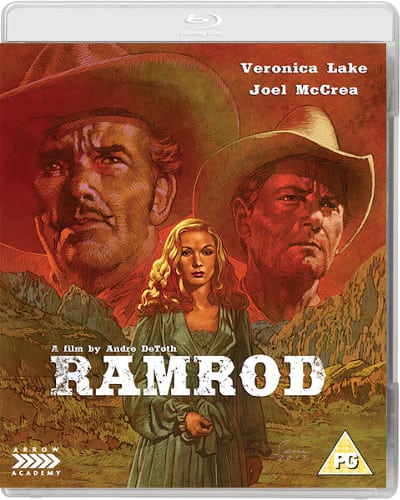
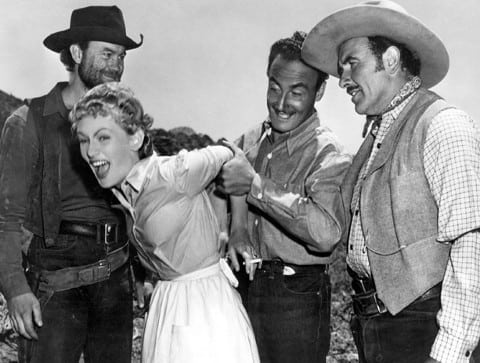
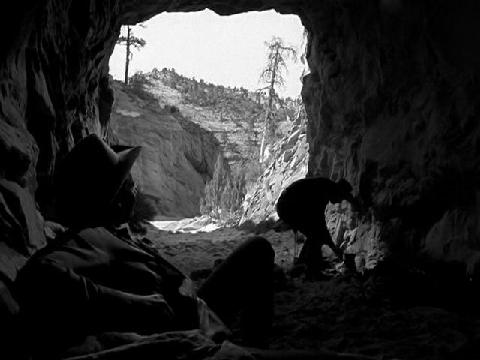

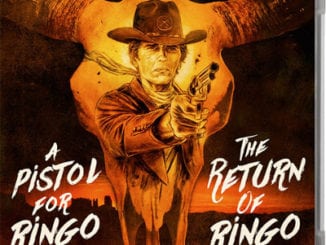
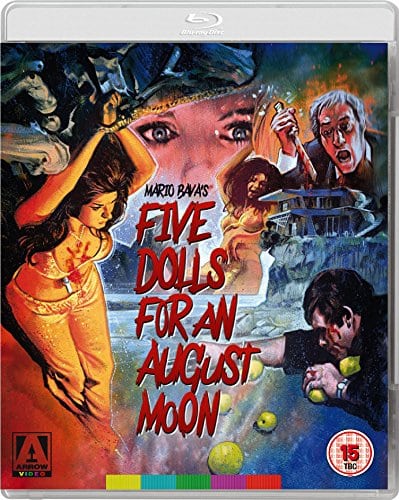
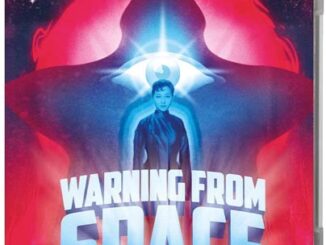
Be the first to comment